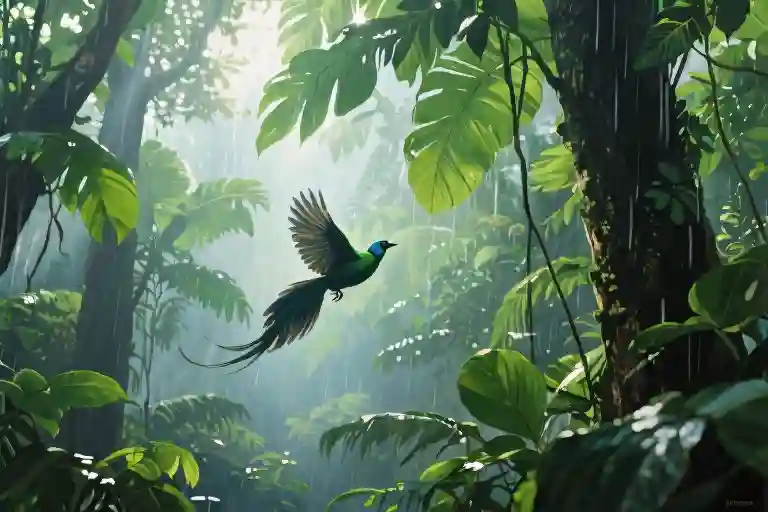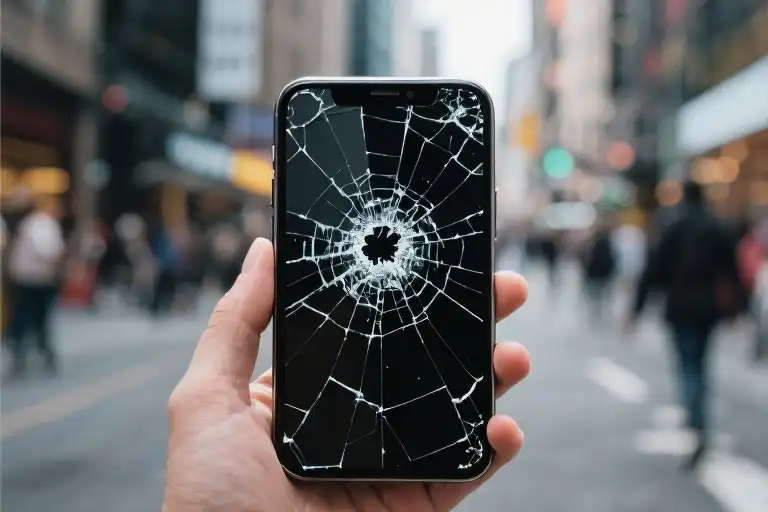The humidity clung to my skin like a second layer as I trudged through the emerald cathedral of the tropical rainforest. Somewhere above, a toucan’s call ricocheted between ancient mahogany trees, while the rhythmic percussion of cicadas provided nature’s unplugged soundtrack. Then – like a needle scratching across vinyl – the spell shattered.
‘Despacito’ at full volume.
A fellow hiker marched past, his phone spewing auto-tuned reggaeton into the sacred quiet. I watched as howler monkeys froze mid-branch, their foghorn voices momentarily silenced. The offender? Oblivious, air-drumming his way through the undergrowth like some tropical forest DJ.
Let’s be clear: this wasn’t just some harmless eccentricity. That tinny bassline wasn’t merely disrupting my hike – it was vandalizing an ecosystem’s delicate acoustic balance. Birds use specific frequencies for mating alerts. Bats navigate through ultrasonic chatter. And here we were, drowning out evolutionary marvels with the musical equivalent of fast food.
Which got me thinking about Queen’s 1984 anthem ‘I Want to Break Free.’ Freddie Mercury’s drag-clad vacuuming suddenly feels less like campy rebellion and more like prophecy. Forty years later, we’re still singing about liberation – except now the chains are digital. That hiker? He wasn’t just a twat with terrible taste in hiking playlists. He was Exhibit A in how we’ve confused constant stimulation with actual experience.
The irony stings like sweat in mosquito bites: we escape to nature only to drag our urban addictions along. Noise-canceling headphones would’ve solved everything – for him, the privilege of private entertainment; for me, the preservation of nature’s symphony. Yet here we both were, trapped in the same paradox Mercury crooned about – desperate for freedom but clinging to our cages.
Somewhere beyond the fading reggaeton, a quetzal bird issued its mournful, descending whistle. It sounded suspiciously like a question: When we say we want to break free… what exactly are we trying to escape?
Nature’s Symphony: A Wilderness Drowned Out by Technology
The rainforest hums with a secret language. High above, toucans exchange raspy calls between the canopy gaps, their voices carrying farther than any smartphone speaker. Below my boots, leafcutter ants march in silent procession, their chemical trails whispering directions only they can decipher. And then – the intrusion. A tinny bassline from a passing hiker’s phone shatters the soundscape, turning this million-year-old concert hall into a poorly curated nightclub.
The Lost Art of Listening
Natural soundscapes operate on an evolutionary timescale we’ve forgotten how to decode. That rhythmic tapping? A woodpecker’s courtship display, each pattern unique to its species. The distant rustling isn’t wind – it’s howler monkeys broadcasting territorial claims across valleys. These aren’t random noises but intricate communication systems refined over millennia. Research from the National Park Service shows artificial noise pollution reduces bird breeding success by 15%, as mating calls get drowned out by our playlists.
Manufactured Noise vs. Evolutionary Wisdom
There’s profound irony in blasting music about freedom (“I Want to Break Free”) while enslaving wilderness to our Spotify algorithms. The rainforest’s soundtrack carries survival information: alarm calls signal predators, frog choruses indicate clean water, and even insect buzzing helps plants time pollen release. Our devices deliver none of this ecological intelligence – just an endless loop of human narcissism.
The Science Behind the Silence
Studies in bioacoustics reveal what hikers intuitively know:
- Birds adjust their dawn chorus timing in noisy areas, wasting precious energy
- Bats abandon optimal feeding grounds when confronted with human sounds
- Whole ecosystems synchronize around natural acoustic patterns we disrupt without thought
Next time you reach for that speaker button, remember: you’re not just annoying fellow hikers. You’re overwriting an ancient language you don’t yet understand.
The Tech Shackles: From Queen’s ‘Freedom’ to Our Smartphone Chains
That moment in the rainforest crystallized a modern paradox. While Freddie Mercury sang about breaking free from societal constraints in 1984, today we’ve willingly chained ourselves to glowing rectangles that dictate our attention. The irony isn’t lost when you realize we’re humming “I Want to Break Free” while compulsively checking notifications.
The Original Rebellion Behind the Anthem
Queen’s iconic track emerged during their experimental phase, with Mercury challenging norms through flamboyant drag performances. The lyrics targeted oppressive relationships and rigid social expectations. “It was about freeing yourself from the lies people tell you,” Brian May later explained. That message resonated globally—until smartphones replaced human oppressors with digital ones.
1984 vs. 2025: Redefining ‘Freedom’
- 1984 Liberation Toolkit:
- Walkman with limited cassette tapes
- Physical maps for navigation
- Uninterrupted observation of surroundings
- Authentic boredom sparking creativity
- 2025 Digital Bondage:
- Algorithm-curated playlists (ironically often including Queen)
- GPS tracking every movement
- Notifications fragmenting attention every 3 minutes (Duke University study)
- Phantom vibration syndrome affecting 68% of adults (NIH data)
We’ve traded one set of chains for another. Where Mercury fought against human control, we now battle algorithmic manipulation—and worse, we pay monthly subscriptions for the privilege.
The Stockholm Syndrome of Smartphone Dependence
That hiker blasting music wasn’t just rude; he exemplified our collective tech dependency. Research from the University of Chicago shows:
- 75% of hikers admit checking phones on trails
- 60% feel anxious without service
- Wildlife sightings decrease by 40% when using headphones
We’ve become like those birds altering their songs near highways—adapting our behavior to tech intrusions until we forget natural rhythms. The very devices promising connection increasingly isolate us from meaningful experiences.
Breaking Free 2.0
The solution isn’t Luddism but conscious usage. Next time you hear “I Want to Break Free,” consider:
- Digital Sunset: Power down devices 1 hour before hikes
- Airplane Mode Adventures: Use offline maps and pre-downloaded content
- Queen-Approved Compromises: If you must listen to music, use bone-conduction headphones
As Mercury implored, “God knows I want to break free.” Maybe in 2025, that starts with silencing notifications long enough to hear a woodpecker’s drum solo.
Breaking Free: Practical Steps for Tech-Free Hiking
That moment in the rainforest wasn’t just about one inconsiderate hiker – it revealed a modern paradox. We escape to nature seeking freedom, yet drag our digital chains along. Here’s how to truly break free, one step at a time.
Personal Tech Etiquette for Nature Lovers
- The Single-Ear Solution:
- When safety requires audio (trail maps, emergency alerts), use bone-conduction headphones or keep one earbud out. This preserves spatial awareness and allows nature’s soundtrack to coexist with necessary tech.
- Pro tip: Set your phone to ‘Do Not Disturb’ mode with exceptions for critical contacts. That work email about TPS reports? It can wait three hours.
- Scheduled Silence:
- Designate tech-free zones during your hike – perhaps the first/last 30 minutes, or whenever you reach scenic viewpoints. These become digital sabbaticals where you reset your auditory palette.
- Try the ‘Photo First, Scroll Later’ rule: Capture memories now, post them after your hike. Your Instagram followers won’t notice the delay, but the warblers might notice your presence.
The #SilentHikeChallenge Movement
Last year, over 12,000 hikers joined this grassroots initiative with simple rules:
- Phones stay in airplane mode
- Music remains personal (headphones only)
- Groups maintain ‘conversation volume’
The results? 89% reported deeper wildlife encounters, and trailhead surveys showed 3x more bird sightings on silent hike days. Join the movement by:
- Using the hashtag to share silent hiking experiences
- Printing free ‘Silent Hiker’ badges from their website to signal your commitment
- Starting local chapters with simple meetups
Tools That Enhance (Rather Than Distract)
- Merlin Bird ID (Cornell Lab):
- Identify birds by sound without disrupting them. The app’s ‘Sound ID’ feature visually displays real-time bird calls around you – like Shazam for nature.
- Gaia GPS:
- Download offline maps to avoid data-hungry navigation. The ‘Battery Saver’ mode can extend your phone’s life for multi-day trips.
- Nature Sound Journals:
- Apps like WildLog let you record and geo-tag natural sounds, creating an acoustic map of your journey. Many users report this focused listening deepens their connection to places.
Remember: The goal isn’t tech abstinence, but intentional use. As Queen reminded us, breaking free requires recognizing what binds us first. Your next trailhead might be the perfect place to start that revolution – one silent step at a time.
The Choice Is Yours: Nature’s Symphony or Digital Noise
As the last echoes of Queen’s iconic lyrics linger in your mind – “God knows, I want to break free” – let’s bring this conversation full circle. That moment in the rainforest wasn’t just about one hiker’s poor etiquette; it became a microcosm of our daily choices about technology and nature.
Your Next Hike: A Simple Decision
When you lace up your boots for your next outdoor adventure, you’ll face a fundamental choice: Will you be the person who:
- Blasts playlists through tinny phone speakers, drowning out woodpeckers drumming on hollow trunks?
- Or preserves the soundscape, where the rustle of ferns in the breeze tells you more about the ecosystem than any podcast could?
This isn’t about judgment – we’ve all been guilty of digital intrusion. That afternoon in the tropics simply reminded me how quickly we forget: nature speaks in whispers, not notifications.
Breaking Free Starts Small
The beauty of Freddie Mercury’s anthem translates perfectly to our modern dilemma. His cry for liberation mirrors what many of us secretly crave:
- Freedom from constant connectivity – Try designating the first/last 15 minutes of hikes as phone-free
- Liberation from algorithmic control – Use apps like Merlin Bird ID to engage with nature, not escape it
- Emancipation from noise pollution – If you need music, consider bone-conduction headphones that leave ears open to ambient sounds
A Challenge Worth Accepting
Here’s my proposition: Next time you’re outdoors, practice selective silence. Notice how:
- Squirrels’ warning calls create ripple effects through the forest
- Your breathing syncs with natural rhythms when undistracted
- The absence of manufactured sound makes wilderness feel truly wild
As Mercury implored, “I want to break free” – from screens, from playlists, from the illusion that we improve nature by imposing our noise upon it. The rainforest doesn’t need your soundtrack; it has composed its own masterpiece over millennia. All we need to do is press pause on our devices long enough to hear it.
So I’ll leave you with this: When your boots next hit the trail, will you walk to the beat of your playlist… or to the pulse of the planet itself? The choice – like the freedom Queen sang about – is entirely yours.





